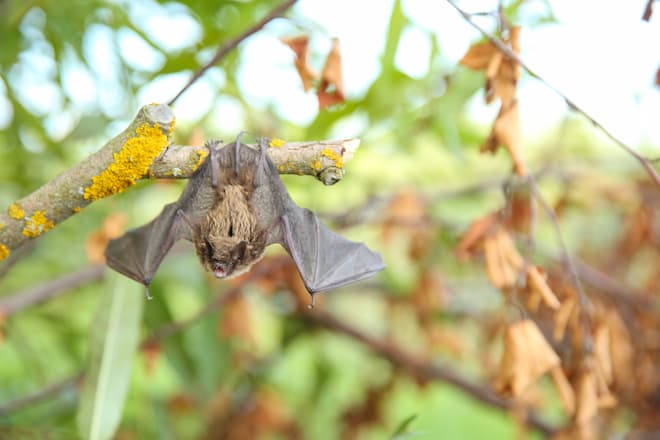Yes, brown bats can hibernate and do so in the winter. They are less active in the wintertime during the colder months. Bats that do live close to residential neighbourhoods so opt to hibernate in enclosed spaces and most of these spaces are attics where these bats will stay. They will also leave bat droppings hat can make people sick.
If you have brown bats that are hibernating in your attic and need to get rid of them, hire the professionals from Bat Removal Peterborough for guaranteed removal.
These bats enter these attic spaces by making use of entry points throughout the roof level. It must be said, that when you see a brown bat these bat species are endangered and that any bat situation involving a brown bat must be handled with care.
When bats hibernate, they do some in colonies that can reach numbers up to a whopping 1000 bats, but in practice due to the restrictions in size, these numbers will be of course way smaller. This will depend on the size of the space as well. Bats have an inclination to hibernate in darker spaces that are not able to be disturbed and as such these bats will hibernate in places such as caverns, caves, mines, barns, and hollow trees.
Most bats will go into hibernation between April and October, and before doing that will store up fat reserves to pull them through the winter. Their diet consists of different insect species such as beetles, flies, stoneflies, mayflies, true bugs, net-winged insects, scorpion flies, caddisflies, and cockroaches.
So, what happens if a bat does find your attic and decides to stay? Due to their protected status, they can’t be just chased out or led out. Technicians are bound by law to wait and to act when it is allowed… The best time to remove bats is somewhere between spring when they return to the roost and are out of hibernation and in the fall before they go back to their roost.
This is a good time because technicians can also make sure that no young are in the attic. Bats give birth in late May and June. Baby bats are completely helpless and will always need their mother. Bat pups will leave the roost approximately 2-3 months after giving birth.
There is an issue when a brown bat does find your attic and decides to pull through the winter. Due to their endangered status, they are not able to be removed that easily and this is because they are greatly under threat by White-Nose Syndrome.
This syndrome was first spotted in New York back in 2006 back in the winter and can kill a large swat of bats at once. This disease will affect most hibernating bats and has devastating consequences. As a result, 90% of the brown bat population was wiped out when it made its way to Canada, especially in Southern Ontario where the bat was once the most seen bat species out of them all.
The most optimal time to remove bats is between the spring and that is when they are out of hibernation. This is also the time when they go back to their roost. Technicians will also be able to make sure that there are no young in the attics as well which makes the removal process so much easier. Bat pups will leave the bat roost after approximately 2-3 months and will be going their own way
Professional bat removal specialists are highly qualified and experienced to handle every bat infestation, regardless of the severity of the bat infestation, we can handle it all. Exterminator Peterborough has all the tools and the equipment to secure an ethical and fast bat removal. Due to the legal complexity of bat removals, we advise you to call any of our customer service representatives for any questions. If you have concerns or suspicions of a bat infestation feel free to call for more information.

